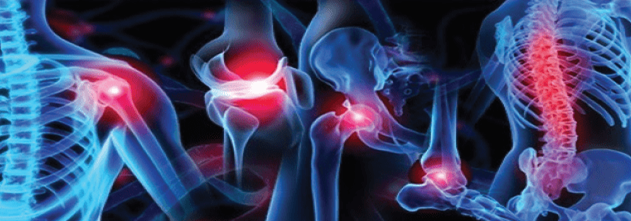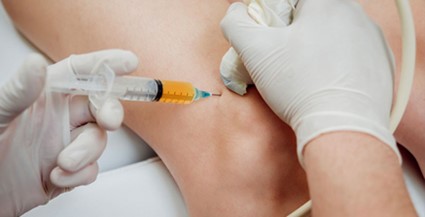Regenerative medicine is a medical field that focuses on repairing or replacing damaged cells, tissues, or organs to restore normal function. It aims to stimulate the body's natural healing mechanisms to regrow tissues itself, rather than simply treating symptoms as traditional medicine does. This approach has the potential to significantly improve the treatment of a wide range of conditions, providing long-term solutions and potentially reducing the need for medications, surgeries, and other interventions.
The field of orthopaedics has traditionally relied on surgical intervention and implants to address musculoskeletal injuries and diseases. However, regenerative medicine offers a paradigm shift by aiming to harness the body's inherent healing potential to repair and restore damaged tissues. This paper explores the scientific basis of regenerative medicine in orthopaedics, focusing on its potential and current applications.
The Need for Regenerative Medicine in Orthopaedics:
The need for regenerative medicine is highlighted by the limitations of traditional orthopaedic treatments. This article examines the challenges and potential solutions offered by this transformative approach.
1. Limitations of Traditional Treatments:
Pain Management: Pain medication provides relief, but it does not address the underlying cause of the problem. Long-term use of pain relievers can have side effects.
Surgery: Joint replacements and other traditional surgeries can effectively restore function, but they carry risks such as infection, bleeding, and limited long-term durability. Revision surgeries can be complex and less successful.
Physical therapy: Although physical therapy is crucial for rehabilitation, it often fails to promote regeneration of severely damaged tissues.
2. Regenerative Medicine:
Addressing the Root Cause Regenerative medicine aims to heal damaged tissue, potentially leading to long-term solutions and reducing the need for repeat interventions.
Additionally, regenerative therapies could offer implants with greater longevity compared to traditional replacements, by promoting the regeneration of natural tissues.
Improved recovery is also a potential benefit. Stimulating the body's innate healing mechanisms could potentially result in faster recovery times and a quicker return to normal function.
3. Specific Needs Addressed by Regenerative Medicine:
Regenerative therapies have the potential to slow down the progression of osteoarthritis by promoting cartilage repair and reducing inflammation, which could significantly improve the quality of life for patients. Additionally, athletes frequently experience ligament and tendon tears, which can be addressed through regenerative medicine. Regenerative approaches may accelerate healing and improve outcomes, potentially allowing for a faster return to competitive sports.
In cases of non-union fractures, regenerative treatments could stimulate bone growth and prevent the need for additional surgeries.
4. The Economic Burden of Musculoskeletal Disorders:
Musculoskeletal disorders are a significant economic burden on healthcare systems worldwide due to the costs associated with surgeries, pain management, and rehabilitation. Regenerative medicine has the potential to reduce the need for these interventions, leading to substantial cost savings in the long run.
Therapeutic Approaches in Regenerative Orthopaedics:
Regenerative medicine utilizes various tools to promote tissue healing:
Orthobiologics are biological products containing bioactive molecules or cells with regenerative potential. Examples of orthobiologics include Platelet-Rich Plasma (PRP) and Mesenchymal Stem Cells (MSCs).
PRP is a concentration of platelets from a patient's own blood, rich in growth factors that stimulate tissue healing.
MSCs are adult stem cells with the ability to differentiate into various cell types, including bone, cartilage, and tendon cells.
Exosomes are also a type of ortho-biologic. Extracellular vesicles contain proteins and RNA that can modulate inflammation and promote tissue repair.
Scaffolds are biocompatible materials that provide a 3D structure for cells to adhere, grow, and differentiate into functional tissues.
Advanced applications:
Personalized medicine: The field is moving towards tailoring treatment plans to a patient's specific needs. Genetic profiling can identify individuals with a higher potential for success with certain regenerative therapies.
Exosomes: These tiny membrane vesicles released by cells have enormous potential. They can be loaded with therapeutic molecules and targeted to specific tissues to promote regeneration.
Immunomodulation: Regenerative approaches can be combined with strategies to modulate the immune system to create an optimal environment for healing and reduce inflammation.
Current Applications:
Extensive research is underway to understand the mechanisms by which these therapies work. Here's a look at some current applications:
At our center, The Yellow Ribbon we are currently doing the PRP procedure, up till now we have done the procedure for about 190 patients successful.
Bone regeneration: MSCs and bone morphogenetic proteins (BMPs) show promise in promoting bone healing in fractures, non-unions and bone defects.
Cartilage repair: Techniques using PRP, MSCs and scaffolds are being investigated for the treatment of cartilage injuries and osteoarthritis.
Ligament and tendon repair: PRP injections and MSC therapy are being investigated to accelerate healing and improve outcomes in ligament and tendon injuries.
The Future of Regeneration:
The future of regenerative medicine in orthopaedics appears promising. Current research is dedicated to enhancing established techniques and investigating new frontiers, such as
Gene editing. This technology shows potential for correcting genetic defects that contribute to musculoskeletal disorders.
Another area of interest is bioprinting. The use of 3D printing technology in combination with cells and biomaterials has the potential to facilitate the development of intricate tissue structures suitable for transplantation.
Bioprinting for Complex Tissues: Advancements in 3D bioprinting technology show promise for creating functional implants with intricate structures that mimic natural tissues, such as menisci or articular cartilage.
Tissue Engineering with Biomaterials: Novel biomaterials are being developed that are not only biocompatible but also actively stimulate and guide tissue regeneration.
Artificial Intelligence (AI) in Therapy Development: AI is a powerful tool for analyzing vast datasets and accelerating the discovery of new therapeutic targets and personalized treatment strategies.
Addressing Limitations:
Despite its exciting potential, regenerative medicine in orthopaedics faces challenges:
Cell Source and Delivery: Obtaining sufficient and high-quality stem cells remains a challenge. Additionally, efficient delivery methods to ensure cells reach the target site and function effectively are crucial.
Scalability and Cost-Effectiveness: Expanding stem cell therapies for widespread use requires cost-effective methods for cell production and treatment delivery.
Further investigation is required to determine the long-term safety and efficacy of some regenerative therapies, which may necessitate long-term follow-up studies.
Ethical considerations surrounding stem cell research and gene therapy require careful attention as the field progresses. Ongoing discussions are necessary to address issues such as informed consent, patient safety, and the potential for misuse of these technologies.
The potential for regenerative medicine in orthopaedics is promising due to advances in cell engineering, biomaterials, and gene therapy. Personalised and targeted therapies for musculoskeletal disorders can be developed through these advancements. Continued research and clinical trials are crucial to translate scientific potential into effective and widely available treatments that will revolutionise patient care in orthopaedics. Regenerative medicine in orthopaedics has the potential to transform the treatment of musculoskeletal conditions by addressing challenges and utilizing new technologies. This paradigm shift could lead to more effective self-healing of the body, reducing the need for extensive surgeries and implants, and ultimately improving patient outcomes and quality of life.










Comments